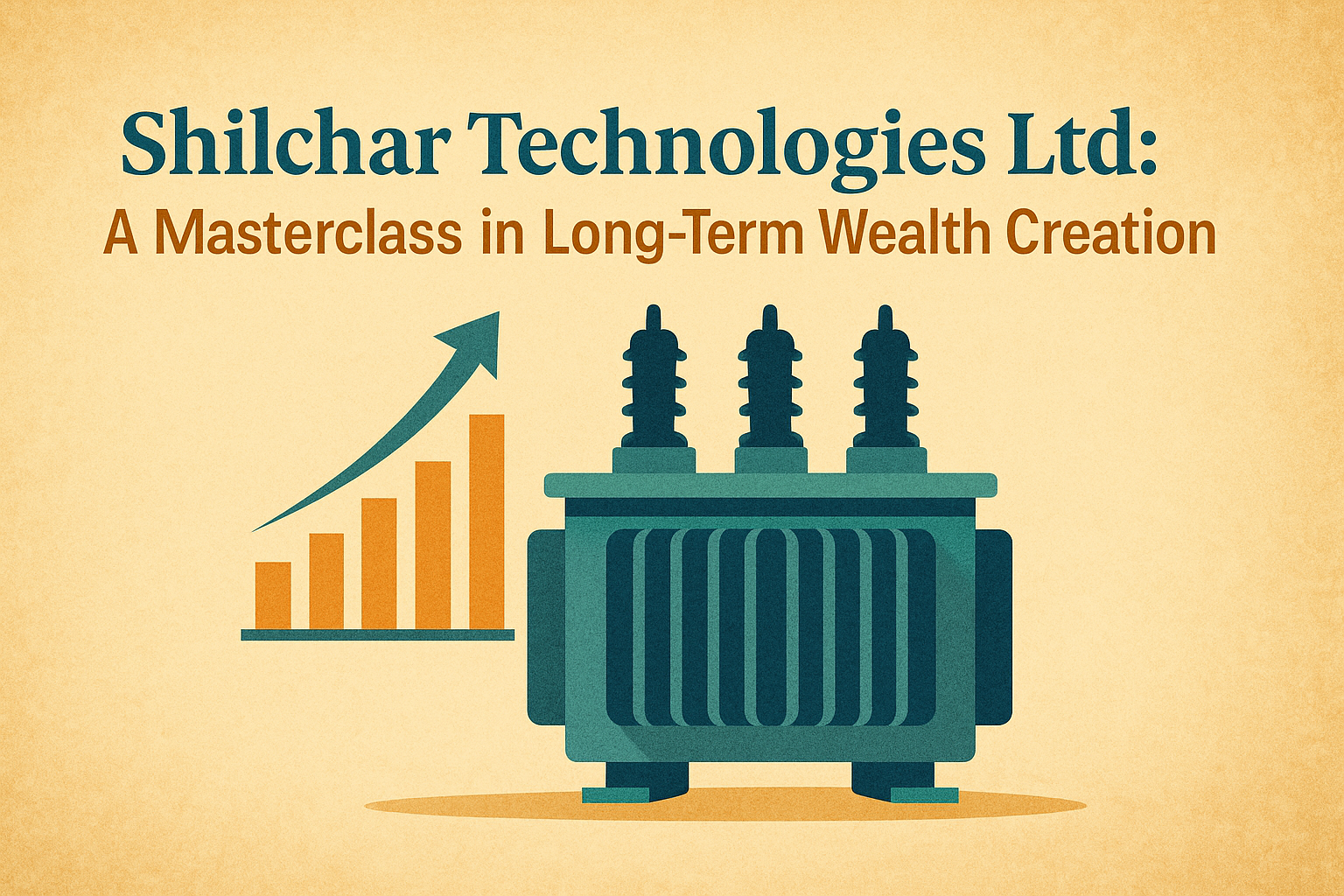The usual suspects top the list—high returns on capital, a competent and disciplined management team, consistent profitability, and a history of delivering long-term value for shareholders. But companies that tick all these boxes, and do so year after year without faltering, are exceedingly rare.
Shilchar Technologies Ltd is one such exception. Quietly but relentlessly, this transformer manufacturer has compounded investor wealth by an astounding 15,000% over the last five years, all while maintaining profitability, scaling operations, and staying debt-free. Yet, despite its phenomenal run, the stock still trades at a discount to its long-term potential.
Let’s explore what makes Shilchar one of the most compelling long-term investment stories in India today.
The Business: Simple on the Surface, Strategic in Execution
With a current market cap of ₹6,029 crore, Shilchar operates in two primary segments—power and distribution transformers, and electronics and telecom transformers, with recent expansion into ferrite transformers. While the product offering may sound narrow, the company’s revenue growth tells a different story.
Between FY20 and FY25, sales grew from ₹71 crore to ₹623 crore—a compound annual growth rate (CAGR) of 54%. This was driven largely by a boom in exports, which rose from 19% of total revenue in FY21 to 43% in FY25.
This narrow focus, paired with global demand, forms what can be described as Shilchar’s ‘Circle of Wealth’—a self-sustaining cycle of revenue, reinvestment, and returns.
Operational Metrics That Matter
Every layer of Shilchar’s financials reinforces its consistent operational strength:
Revenue and Profitability
- Sales CAGR (FY20–FY25): 54%
- EBITDA CAGR (FY20–FY25): 128%
- Net Profit CAGR (FY20–FY25): 151%
The company’s EBITDA grew from ₹3 crore in FY20 to ₹185 crore in FY25, while net profits surged from ₹2 crore to ₹147 crore over the same period.
Return Ratios
- Return on Capital Employed (ROCE): 71%
- 5-Year Average Return on Equity (ROE): 44%
- ROE in FY25: 53%
These figures illustrate a capital-efficient business model that converts capital into profits at industry-leading rates—indicative of excellent management execution and pricing power.
Zero Debt. All Discipline.
One of Shilchar’s standout traits is its debt-free balance sheet. All expansions—such as the increase in fixed assets from ₹39 crore in FY20 to ₹59 crore in FY25—have been funded through internal accruals.
This capital discipline is further reinforced by the company’s low payout ratio of 9%, implying that profits are being reinvested to fuel future growth rather than being used for aggressive shareholder distributions. That said, the company has declared a ₹12.5 per share final dividend, along with a 1:2 bonus issue, signalling both confidence and investor reward.
Valuation and Future Growth
Despite its meteoric rise—from ₹35 per share in June 2020 to ₹5,220 in June 2025—the stock trades at a PE ratio of 41x, below the industry median of 44x. Relative to Shilchar’s own 10-year median PE of 16x, the stock has undergone a deserved re-rating—but remains undervalued given its current growth trajectory.
The order book stands firm at ₹400+ crore, and Shilchar is exploring entry into higher capacity transformers (MVA/kV classes), which could unlock new revenue streams.
Risks on the Horizon
No investment is without risks, and Shilchar is no exception. Key concerns include:
- Receivables Management: Debtor days increased from 86 (FY24) to 134 (FY25), raising red flags around liquidity.
- Working Capital Efficiency: Working capital days stretched from 77 to 144 in FY25—potentially impacting cash flows.
- Export Dependency: With 44% of revenues from exports, the business is exposed to currency and geopolitical risks.
- Low Dividend Yield: At 0.16%, the yield may disappoint income-focused investors despite the high profitability.
Yet, recent commentary from Chairman Ajay Shah offers reassurance. Shilchar achieved full capacity utilization ahead of schedule in Q4 FY25—initially targeted for FY26—and has seen renewed strength in domestic demand. These developments hint at a more diversified growth strategy going forward.
Conclusion: A Diamond in the Rough
Shilchar Technologies is not just a stock that has performed well—it is a blueprint for long-term wealth creation. With high returns on capital, stellar financials, disciplined reinvestment, and a clear growth trajectory, it stands out as a rare gem in India’s midcap universe.
That said, investors must remain alert to working capital issues and macro risks. But with a 15,000% return in five years and still trading at a relative discount, Shilchar offers a compelling mix of performance, discipline, and potential.
For long-term investors looking beyond the obvious names, Shilchar may well be the quiet compounder that rewrites your portfolio’s future.
Feel free to share your experiences and insights in the comments below. Let’s continue the conversation and grow together as a community of traders and analysts.
By sharing this experience and insights, I hope to contribute to the collective knowledge of our professional community, encouraging a culture of strategic thinking and informed decision-making.
As always, thorough research and risk management are crucial. The dynamic nature of financial markets demands vigilance, agility, and a deep understanding of the tools at your disposal. Here’s to profitable trading and navigating the election season with confidence!
Ready to stay ahead of market trends and make informed investment decisions? Follow our page for more insights and updates on the latest in the financial world!
For a free online stock market training by Yogeshwar Vashishtha (M.Tech IIT) this Saturday from 11 am – 1 pm, please sign up with https://pathfinderstrainings.in/training/freetrainings.aspx
Experience profits with my winning algo strategies – get a free one-month trial with ₹15 lakh capital! – https://terminal.algofinders.com/algo-terminal
Disclaimer
This article should not be interpreted as investment advice. For any investment decisions, consult a reputable financial advisor. The author and publisher are not responsible for any losses incurred by investors or traders based on the information provided.


